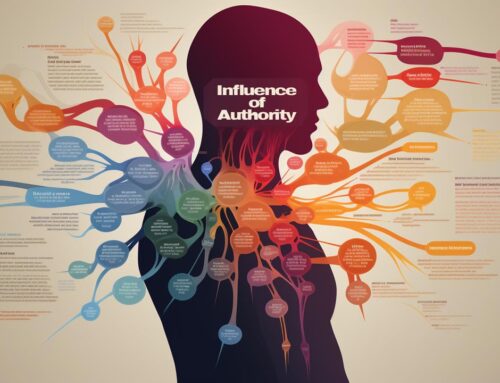Persuasive Copywriting stands as a beacon for those who wish to persuade, inform, and inspire. At its core, copywriting is the art of crafting words that drive action. Whether it’s convincing a customer to make a purchase, persuading a reader to subscribe to a newsletter, or inspiring an audience to support a cause, effective copywriting is the key. For those unfamiliar with this craft, diving into the world of copywriting can seem daunting. However, with the right techniques and understanding, anyone can harness the power of words to create compelling narratives that resonate with their audience. In this article, we will explore the foundational techniques of persuasive copywriting, delve into industry-specific strategies, and provide insights backed by research and expert opinions. By the end of this journey, readers will have a comprehensive understanding of the art of persuasion in copywriting and will be equipped with the tools to apply these techniques in their own writing endeavors.
The Art of Persuasion: Copywriting Techniques for the Uninitiated
Table of Contents
- Understanding the Audience
- The Power of Storytelling
- Emotional Appeal: Tugging at Heartstrings
- The Principle of Scarcity
- Using Statistics and Research
- Expert Opinions: The Voice of Authority
- Frequently Asked Questions
- Final Thoughts
- Sources
Understanding the Audience: Delving Deeper into the Heart of Persuasive Copywriting
Understanding your audience is not just a step—it’s the foundation upon which all successful campaigns are built. It’s akin to a chef knowing the palate of their diners or a tailor taking precise measurements before crafting a suit. Without this foundational knowledge, even the most eloquent words can fall flat. Let’s delve deeper into the intricacies of understanding your audience and why it’s paramount in the art of persuasion.
Why Audience Understanding is Crucial
- Personalized Messaging: In an age of information overload, generic messages are easily ignored. Tailored content, on the other hand, feels personal and resonates more deeply with the reader. It speaks directly to their needs, desires, and pain points, making them feel understood and valued.
- Effective Problem-Solving: By understanding your audience’s challenges and needs, you can position your product or service as the ideal solution. This not only showcases the value of what you’re offering but also establishes trust.
- Building Long-Term Relationships: When your audience feels that you truly understand and cater to their needs, they’re more likely to become loyal customers and brand advocates. This fosters long-term relationships, which are invaluable in the business world.
How to Understand Your Audience
- Market Research: This involves collecting data about your target demographic. Surveys, focus groups, and interviews can provide insights into their preferences, behaviors, and buying patterns.
- Buyer Personas: Create detailed profiles of your ideal customers. These personas should include demographic information, behavioral patterns, motivations, and goals. They serve as a reference point when crafting your copy, ensuring it aligns with your audience’s interests.
- Engage on Social Media: Platforms like Twitter, Facebook, and Instagram offer a goldmine of insights. Monitor comments, feedback, and discussions to gauge your audience’s sentiments, preferences, and concerns.
- Feedback Loops: Encourage feedback from your existing customers. This can be through reviews, testimonials, or direct feedback mechanisms on your website. Such firsthand insights can be invaluable in refining your messaging.
- Competitor Analysis: Observe how competitors communicate with a similar audience. While you shouldn’t copy their strategies, understanding what works (and what doesn’t) can offer valuable lessons.
The Pitfalls of Not Understanding Your Audience
- Wasted Resources: Without a clear understanding of your audience, you might spend time and money targeting the wrong demographic or crafting messages that don’t resonate.
- Lost Opportunities: If your message doesn’t align with your audience’s needs and desires, they’re likely to turn to a competitor who does understand them.
- Brand Mismatch: Inconsistent or off-target messaging can confuse your audience and dilute your brand’s identity.
Understanding your audience is the linchpin of effective copywriting. It informs every aspect of your strategy, from the tone and language you use to the platforms you choose for dissemination. By investing time and resources into truly getting to know your audience, you set the stage for copy that not only persuades but also builds lasting relationships.
The Power of Storytelling: Crafting Narratives that Resonate
From ancient cave paintings to modern-day blockbusters, stories have been our primary medium to communicate, educate, and entertain. In the context of copywriting, storytelling becomes a potent tool to captivate audiences, making messages memorable and compelling. Let’s dive deeper into the art and science of storytelling in persuasive copywriting.
The Psychological Impact of Stories
- Cognitive Engagement: Stories stimulate various parts of the brain. When we read or hear narratives, our brains don’t just process words; they evoke emotions, sensations, and memories. This multi-dimensional engagement makes stories more memorable than mere facts.
- Emotional Connection: A well-told story can make readers laugh, cry, or feel inspired. By evoking emotions, stories create a deeper connection between the brand and its audience.
- Mirror Neurons: These are brain cells that fire both when we act and when we observe the same action performed by someone else. This means that when we read about someone’s experiences in a story, our brains react as if we’re experiencing it ourselves, fostering empathy and understanding.
Crafting a Compelling Story
- Relatable Characters: Your audience should see themselves in the characters you create. Whether it’s a customer facing a particular challenge or a brand hero who embodies company values, relatable characters make stories resonate.
- Clear Structure: Every story should have a beginning (setting the scene), a middle (introducing conflict or challenge), and an end (resolution). This structure keeps readers engaged and provides a clear narrative arc.
- Authenticity: In today’s digital age, audiences are savvy and can spot inauthenticity from a mile away. Ensure your stories are genuine, reflecting real experiences, challenges, and solutions.
- Visual Elements: Incorporate images, videos, or infographics to make your story more engaging. Visual elements can enhance the narrative, making it more immersive.
- Call to Action (CTA): While storytelling is about engagement, don’t forget the end goal. Conclude with a clear CTA, guiding readers on what to do next.
Storytelling in Different Mediums
- Blogs and Articles: Use storytelling to introduce a problem, discuss its implications, and then present your product or service as the solution.
- Social Media: Share customer testimonials, behind-the-scenes looks, or brand origin stories to engage followers.
- Email Campaigns: Craft narratives around promotions, product launches, or company news to make your emails stand out in crowded inboxes.
- Video Marketing: Videos are inherently narrative. Use this medium to tell impactful stories about your brand, customers, or the industry.
The Risks of Poor Storytelling
- Losing Interest: A story without a clear structure or relatable characters can quickly lose the audience’s interest.
- Muddled Messaging: If a story tries to convey too many messages or lacks clarity, it can confuse the audience and dilute the brand message.
- Inauthenticity Backlash: Stories that come off as fake or overly manufactured can harm a brand’s reputation, leading to mistrust.
Storytelling is a powerful tool in the copywriter’s arsenal. When done right, it can transform mundane messages into memorable narratives, fostering deep connections with audiences. As brands vie for attention in an increasingly crowded marketplace, those that master the art of storytelling will undoubtedly stand out.
Emotional Appeal: Tugging at Heartstrings – The Key to Resonant Copywriting
Emotion, the universal language that transcends borders, cultures, and demographics. It’s the driving force behind our decisions, actions, and memories. In the realm of copywriting, tapping into this powerful force can mean the difference between a message that’s easily forgotten and one that lingers long after the words have been read. Let’s delve deeper into the art of emotional appeal and its pivotal role in persuasive copywriting.
The Science Behind Emotional Appeal
- Decision Making: Contrary to popular belief, decisions are more often driven by emotions than logic. Neuroscientific research has shown that people with damage to the part of the brain responsible for emotions struggle with decision-making, even if their logical faculties are intact.
- Memory Retention: Emotionally charged events are better remembered than neutral ones. This is because emotions enhance the consolidation of memories, making them more durable over time.
- Trust and Loyalty: Brands that consistently evoke positive emotions are more likely to earn consumer trust and loyalty. Emotional connections often lead to longer-lasting relationships compared to those built solely on transactional interactions.
Crafting Copy with Emotional Appeal
- Know Your Audience’s Emotional Drivers: Understand what makes your audience tick. Is it a desire for success? A fear of missing out? An aspiration for social acceptance? Tailor your message to these emotional triggers.
- Use Relatable Scenarios: Paint a picture with words. Describe scenarios your audience can relate to, allowing them to see themselves in the narrative and evoking the desired emotion.
- Choose Words Wisely: Some words are inherently more emotionally charged than others. Words like “exclusive,” “discover,” “imagine,” or “revolutionary” can evoke feelings of curiosity, excitement, or belonging.
- Incorporate Real Stories: Share testimonials, success stories, or case studies. Real-life stories can evoke empathy, inspiration, and trust.
- Visuals and Music: If your medium allows, use images, videos, or music to enhance the emotional tone. Visual and auditory elements can amplify the emotional impact of your message.
Common Emotional Appeals in Copywriting
- Fear: Often used in insurance or security industries, this appeal highlights potential risks and how a product or service can mitigate them.
- Happiness: Used widely in travel, entertainment, or lifestyle industries, this appeal evokes the joy and satisfaction a product or service can bring.
- Pride: Luxury brands or exclusive services often tap into the desire for status, achievement, and recognition.
- Trust: Financial institutions, healthcare providers, or any brand wanting to establish long-term relationships often use this appeal.
- Sadness: Charities or social causes might use this appeal to evoke empathy and drive donations or support.
The Risks of Overdoing Emotional Appeal
- Coming Off as Manipulative: If emotional appeal is overused or feels forced, it can backfire, making the brand seem insincere or manipulative.
- Diluting the Message: While emotions are powerful, the core message should not be lost. The emotional appeal should enhance, not overshadow, the primary message.
- Alienating Part of the Audience: Not everyone reacts to emotional triggers in the same way. It’s essential to strike a balance to cater to a broader audience.
Emotional appeal is a potent tool in the copywriter’s toolkit. When wielded with authenticity and understanding, it can transform messages into powerful narratives that resonate deeply with audiences, driving them to think, feel, and act.
The Principle of Scarcity: Amplifying Desire in the World of Copywriting
Few principles are as universally compelling as scarcity. The idea is simple: when something is in short supply, its perceived value increases. This principle, deeply rooted in our evolutionary history, plays a pivotal role in the world of marketing and copywriting. Let’s explore the nuances of the scarcity principle and how it can be harnessed to drive action.
The Psychology Behind Scarcity
- Fear of Missing Out (FOMO): Humans are inherently social beings, and the fear of being left out or missing an opportunity can be a powerful motivator. Scarcity taps into this fear, compelling individuals to act quickly to avoid potential regret.
- Perceived Value: Items that are scarce are often perceived as more valuable, even if their intrinsic value remains unchanged. This perception can be attributed to the basic economic principle of supply and demand.
- Urgency: Scarcity creates a sense of urgency. When people believe that they have limited time to act, they’re more likely to make quicker decisions.
Implementing Scarcity in Copywriting
- Limited Time Offers: Highlighting that a particular deal or discount is available for a short period can drive immediate action. Phrases like “Offer ends soon” or “Only for the next 24 hours” can be effective.
- Limited Stock: Indicating that there’s a limited quantity of a product available can increase its desirability. Statements like “Only 5 items left in stock” or “Limited edition release” can be compelling.
- Exclusive Access: Offering exclusive access to content, products, or services for a select group of people can create a sense of privilege and urgency. This can be seen in phrases like “Exclusive members-only sale” or “Early bird access.”
- Waiting Lists: For new product launches or services, creating a waiting list can amplify the perception of demand and desirability.
- Real-time Updates: With the advent of digital technology, brands can show real-time updates on product availability, further emphasizing scarcity. For instance, “12 people are viewing this product now” or “Last booked 5 minutes ago.”
Potential Pitfalls and Ethical Considerations
- Overuse: If every product or service is always “running out” or “on sale for a limited time,” the impact of scarcity can diminish, and consumers may become skeptical.
- Artificial Scarcity: Creating a false sense of scarcity can backfire if customers discover the truth. It’s essential to maintain transparency and authenticity.
- Pressure Tactics: While scarcity can drive action, it’s crucial not to pressure or manipulate customers unduly. This can lead to buyer’s remorse and damage brand reputation.
- Ethical Implications: Especially in sectors like healthcare or essential services, using scarcity as a tactic can be seen as unethical. It’s vital to consider the broader implications and potential harm.
The principle of scarcity is a powerful tool in the copywriter’s arsenal. When used judiciously and ethically, it can amplify desire, drive action, and enhance the perceived value of a product or service. However, like all tools, it requires a careful and considered approach to ensure its effectiveness and maintain trust with the audience.
Using Statistics and Research: Strengthening Your Copy with Credible Evidence
Words alone often aren’t enough. To truly convince readers and bolster your claims, integrating statistics and research is paramount. These elements lend credibility, appeal to logic, and provide concrete evidence to support your narrative. Let’s delve deeper into the importance of statistics and research in copywriting and how to effectively incorporate them.
The Power of Data-Driven Copy
- Building Trust: In an era of misinformation and skepticism, backing your claims with credible data can establish trust with your audience. It shows that your assertions aren’t mere opinions but are grounded in fact.
- Clarifying Complex Ideas: Numbers can distill complex ideas into digestible pieces of information. For instance, saying “a majority of people” is vague, but stating “68% of people” is precise and impactful.
- Creating a Sense of Authority: Using well-researched statistics positions you or your brand as an authority in the field, making readers more likely to trust and engage with your content.
- Evoking Emotion: While numbers are inherently logical, they can also evoke strong emotions. For example, stating that “over 1 million species are at risk of extinction” can elicit a more profound emotional response than simply saying “many species are endangered.”
Incorporating Statistics and Research Effectively
- Use Reputable Sources: Ensure that the data you use comes from credible sources such as academic institutions, established research firms, or government agencies. Cite these sources to enhance credibility.
- Make Data Relatable: Large numbers can be hard to grasp. Where possible, break them down into more relatable terms. For instance, instead of saying “a company wastes 10,000 hours annually on redundant tasks,” you could say “each employee loses 5 hours a week to redundant tasks.”
- Visualize Data: Graphs, charts, and infographics can make data more accessible and engaging. They can also break up text-heavy content, making it more reader-friendly.
- Stay Updated: Data and research findings can change over time. Ensure that the statistics you use are current and relevant. Outdated information can undermine your credibility.
- Avoid Cherry-Picking: It’s essential to present data in an unbiased manner. Cherry-picking statistics to support a narrative while ignoring contradictory data can be misleading.
Potential Pitfalls
- Misinterpretation: Ensure that you understand the data correctly before incorporating it. Misinterpreting or misrepresenting statistics can harm your credibility.
- Overloading with Data: While statistics are valuable, overloading your copy with too many numbers can overwhelm readers. Strive for a balance between narrative and data.
- Confirmation Bias: This is the tendency to search for, interpret, and remember information that confirms one’s preconceptions. Be wary of this bias and aim to present a balanced view.
Statistics and research are invaluable tools in the copywriter’s toolkit. They enhance credibility, provide concrete evidence, and can make arguments more compelling. However, like all tools, they must be used judiciously and ethically. By integrating data with care and integrity, you can craft copy that not only persuades but also educates and informs.
Expert Opinions: The Voice of Authority in Persuasive Copywriting
The world is saturated with information, distinguishing fact from fiction can be challenging. This is where expert opinions come into play. Leveraging the insights and knowledge of industry leaders and specialists can elevate your copy, lending it an air of credibility and trustworthiness. Let’s delve deeper into the role of expert opinions in copywriting and how they can be harnessed to bolster your message.
The Weight of an Expert’s Voice
- Building Credibility: When a recognized expert in a field endorses a product, service, or idea, it immediately gains credibility. Their years of experience and knowledge act as a testament to the validity of your claims.
- Clarifying Complex Topics: Experts, with their deep understanding of specific subjects, can distill complex ideas into digestible insights, making them accessible to a broader audience.
- Enhancing Brand Image: Associating with respected figures in an industry can elevate a brand’s image, positioning it as a serious player in the market.
- Addressing Skepticism: In areas where skepticism is high, an expert’s endorsement can assuage doubts and provide reassurance.
Incorporating Expert Opinions Effectively
- Choose Relevant Experts: Ensure that the experts you cite or collaborate with are relevant to the topic at hand. A renowned chef’s opinion on culinary matters is valuable, but their insights on automotive engineering might not carry the same weight.
- Quote Directly: Whenever possible, use direct quotes from experts. This not only adds authenticity but also allows readers to engage with the expert’s exact words.
- Provide Context: When introducing an expert, provide some background. Highlight their achievements, qualifications, and why their opinion matters.
- Collaborate on Content: Consider collaborating with experts on articles, interviews, or webinars. This not only provides valuable content but also allows the expert to share nuanced insights.
- Acknowledge Varied Opinions: Remember that experts, like all individuals, can have varied opinions. It’s essential to present a balanced view, especially on contentious topics.
Potential Challenges
- Over-reliance: While expert opinions are valuable, over-relying on them can make your copy seem one-dimensional. It’s essential to balance expert insights with other forms of evidence and narrative.
- Bias and Conflict of Interest: Ensure that the experts you cite don’t have conflicts of interest related to your content. If they do, it’s crucial to disclose this information to maintain transparency.
- Accessibility: While experts often have deep knowledge, they might use jargon or complex language. Ensure that their insights are presented in an accessible manner for your target audience.
Expert opinions are a powerful tool in the realm of persuasive copywriting. They lend authority, credibility, and depth to your content. However, like all tools, they must be used judiciously and ethically. By integrating expert insights with care and respect, you can craft copy that resonates with readers, educates them, and builds trust.
Frequently Asked Questions
Final Thoughts
The art of persuasion in copywriting is a delicate balance of understanding your audience, crafting compelling narratives, and backing your claims with credible evidence. The most crucial takeaway from this article is that effective copywriting is not just about selling a product or service; it’s about creating a connection with your audience. By understanding their needs and desires, leveraging emotional triggers, and supporting your claims with research and expert opinions, you can craft copy that resonates, persuades, and drives action.
Sources
- Copyblogger – The Art of Persuasive Writing
- HubSpot – The Ultimate Guide to Copywriting
- Forbes – The Power of Emotional Appeal in Advertising
- Cialdini, R. B. (1984). Influence: The psychology of persuasion. New York: HarperCollins.











Leave A Comment